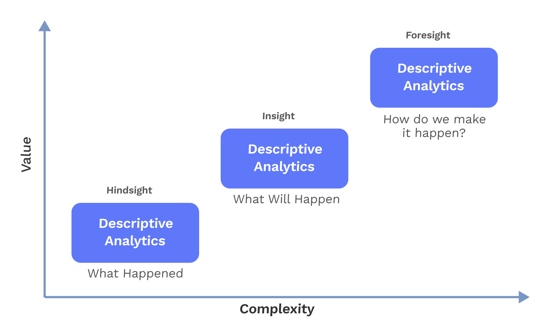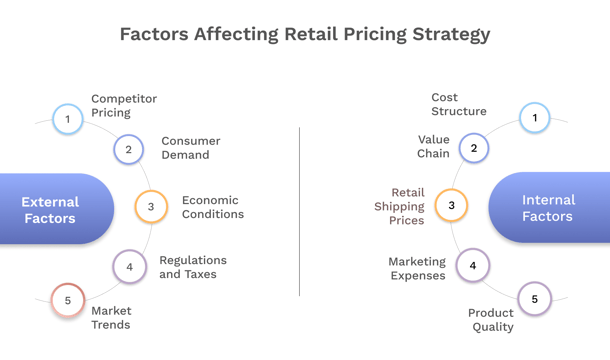Prescriptive Analytics: Optimizing Pricing and Inventory Strategies
Prescriptive Analytics: Optimizing Pricing and Inventory Strategies
Retailers face constant challenges like changing market trends and unpredictable consumer behavior. To stay competitive, businesses need smart strategies, like prescriptive analytics.
Prescriptive analytics goes beyond telling you what happened or predicting what will happen. It provides actionable insights that guide decisions on pricing and inventory. By using data-driven recommendations, businesses can optimize pricing and manage inventory more efficiently. This leads to better profits, reduced waste, and happier customers.
In this article, we will explore how prescriptive analytics helps retailers optimize pricing and inventory strategies, driving growth and efficiency.
Quick Takeaways
- Prescriptive analytics offers actionable insights, suggesting the best course of action based on data.
- The global prescriptive analytics market is rapidly expanding, expected to grow from $11.32 million in 2022 to $33.22 million by 2028.
- Prescriptive analytics helps retailers optimize pricing and inventory strategies, reducing stockouts and excess inventory while maximizing profits.
- By integrating pricing and inventory strategies, businesses can achieve significant improvements in efficiency, profitability, and customer satisfaction.
Understanding Prescriptive Analytics
Prescriptive analytics represents the next step in data analysis, offering actionable insights to inform decision-making. Unlike descriptive analytics, which tells you what happened, and predictive analytics, which forecasts future events, prescriptive analytics suggests the best course of action based on the data.

The global prescriptive analytics market is rapidly growing. In 2022, it was valued at $11.32 million and is expected to reach $33.22 million by 2028, with a compound annual growth rate (CAGR) of 19.65% during the forecast period. This growth highlights the increasing adoption and importance of prescriptive analytics across various industries, particularly in retail.
In retail, prescriptive analytics helps businesses optimize pricing strategies by analyzing vast amounts of data, including:
- Sales history
- Market trends
- Consumer behavior
This approach allows retailers to set prices that maximize profits while remaining competitive. Similarly, in inventory management, prescriptive analytics can forecast demand more accurately, reduce stockouts, and minimize excess inventory, leading to more efficient operations and cost savings.
The Role of Prescriptive Analytics in Pricing Strategies
Pricing strategies can make or break a retail business. Retailers face numerous challenges, such as fluctuating market conditions, changing consumer preferences, and intense competition.

Prescriptive analytics offers a solution by providing actionable insights that help optimize pricing strategies.
Pricing Challenges
Retailers often struggle with setting the right prices. Too high, and they risk losing customers to competitors. Too low, and they miss out on potential profits. Additionally, factors like seasonality, promotions, and economic conditions add to the complexity.
Optimization Techniques
Prescriptive analytics uses advanced algorithms and machine learning to analyze large volumes of data, including historical sales, market trends, and consumer behavior. This analysis helps retailers set dynamic pricing models that adjust in real-time to market conditions. For example, prescriptive analytics can determine the best price points for products to maximize profits while remaining competitive.
Enhancing Inventory Management with Prescriptive Analytics
Effective inventory management is crucial for any retail business. Companies face challenges such as overstocking, stockouts, and demand forecasting inaccuracies. Prescriptive analytics provides a data-driven solution to these issues, helping businesses optimize their inventory levels and improve operational efficiency.
Inventory Issues
Retailers often grapple with maintaining the right amount of inventory. Overstocking leads to high holding costs and potential wastage, while stockouts can result in lost sales and dissatisfied customers. Accurate demand forecasting is essential but challenging due to fluctuating consumer behavior and market trends.
Prescriptive Solutions
Prescriptive analytics goes beyond predicting future inventory needs by providing actionable recommendations on how to address these needs. For example, it can suggest optimal reorder points and quantities, considering factors like:
- Lead times
- Holding costs
- Demand variability
This approach ensures that retailers maintain sufficient stock to meet customer demand without incurring unnecessary costs.
A significant benefit of prescriptive analytics in inventory management is its ability to balance inventory levels across the supply chain. By analyzing data on inventory positions, sales, and supply chain dynamics, prescriptive analytics can recommend actions such as redistributing stock between locations to prevent obsolescence and reduce stockouts.
Integrating Pricing and Inventory Strategies
The integration of pricing and inventory strategies helps retailers achieve a balance between supply and demand, maximizing profitability while minimizing costs.
For example, prescriptive analytics can simultaneously analyze pricing data and inventory levels to recommend optimal price points and stock quantities.
This integrated approach ensures that pricing strategies are aligned with inventory availability, reducing the risk of stockouts or overstocking.
Holistic Approach
A holistic approach involves using prescriptive analytics to evaluate various factors, including historical sales data, market trends, and consumer behavior, to optimize both pricing and inventory decisions. By considering these factors together, businesses can develop strategies that are more responsive to market changes and consumer demands.
For instance, during a promotional period, prescriptive analytics can recommend adjusting prices and increasing inventory levels to meet the anticipated surge in demand, ensuring that customers' needs are met without incurring excess inventory costs.
Integration Benefits
Integrating pricing and inventory management through prescriptive analytics provides several key benefits:
- Improved Efficiency: By aligning pricing strategies with inventory levels, retailers can streamline their operations, reducing unnecessary costs and improving overall efficiency.
- Enhanced Decision-Making: Prescriptive analytics offers actionable insights that help retailers make informed decisions, such as when to reorder stock or adjust prices, based on real-time data.
- Increased Profitability: Optimized pricing and inventory strategies lead to higher profit margins by reducing stockouts, minimizing excess inventory, and ensuring that prices reflect market conditions and consumer demand.
For example, a retailer using prescriptive analytics might discover that certain products experience peak demand during specific seasons. By adjusting prices and inventory levels accordingly, the retailer can maximize sales and minimize holding costs.
Enhance Decision-Making with Hypersonix Today
Prescriptive analytics represents the next step in data analysis, providing actionable insights to inform decision-making. By optimizing both pricing and inventory strategies, businesses can achieve significant improvements in efficiency and profitability, staying competitive and responsive to market dynamics.
Hypersonix enhances these capabilities with its advanced AI-driven platform, integrating machine learning and real-time data analysis for dynamic pricing, inventory management, and demand forecasting. This comprehensive approach empowers businesses to make informed decisions, driving growth and operational efficiency.
Discover how Hypersonix’s solutions can revolutionize your pricing and inventory strategies. Book a demo today to optimize your decision-making and drive operational efficiency!







